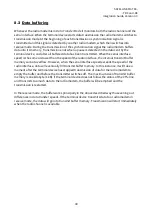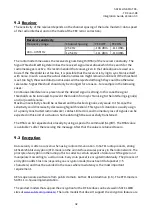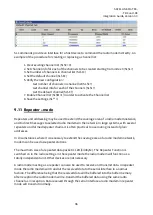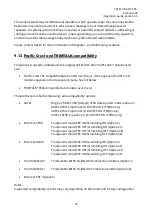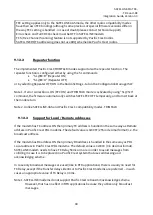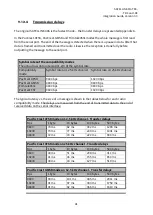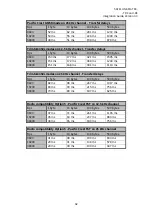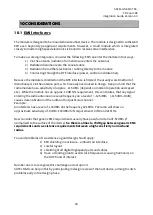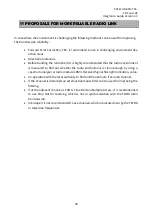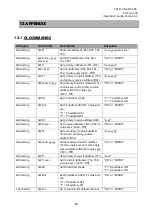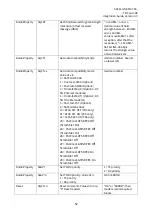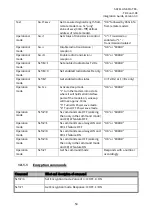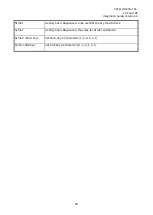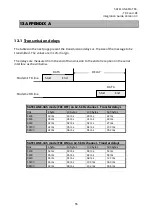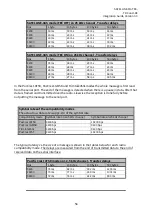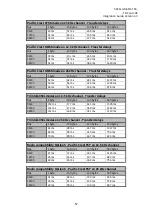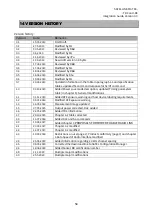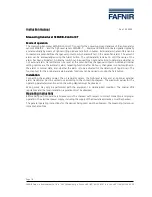
SATELLINE-M3-TR3,
–
TR4 and -R4
Integration Guide, Version 3.0
44
10.2
Electrostatic discharge
As the module is intended to be embedded in a host application, in a typical use case, the
antenna port is the only port of the module directly interface with a surface or contact area
subjected to Electrostatic Discharge (ESD).
Thus, the antenna port is the only interface with high level ESD protection. The DTE port also
features ESD protection diodes, but is not designed to withstand similar performance as
expected from standalone units with enclosures.
Consequently, the module should be subject to ESD handling precautions that typically apply to
ESD sensitive components. Proper ESD handling and packaging procedures must be applied
throughout the processing, handling and operation of any application that incorporates this
module.
The module fulfills the ESD values listed in the following table.
Specification / Requirement
Contact discharge
Air discharge
EN 61000-4-2
Antenna interface
±10kV
<±15kV
DTE interface
±8kV
-
JEDEC JESD22-A114D (Human Body Model, Test conditions: 1.5 k
Ω
, 100 pF)
Module surface
±1kV
n.a.
Table. ESD ratings. Measured Acc. to EN 61000-4-2 specification.
10.3
Using the device in unmanned high reliability applications
The module features software and hardware watchdogs which are incorporated inside the CPU.
While we believe that this is a reliable method of keeping the module in operational condition,
there are parts of the module that can’t be monitored for proper operatio
n to 100%. For example
the module chip
has a firmware that resides in the chips RAM. The firmware can’t be read back or
reload
ed, without interrupting reception. Hence the module can’t reload this automatically by
itself without causing breaks in communication.
To avoid the module from ending up in a state where for example the module chip firmware is
corrupted for example by ionizing radiation, it is recommended that the controlling system
implements some form of watchdog function for the module.
This can be done for example if the system knows that data should be received every second, and
no data has been received for a minute
–
then do a module restart using the ENA_MOD pin or by
issuing a restart command, or a cold boot by toggling VCC_IN low and high again.

